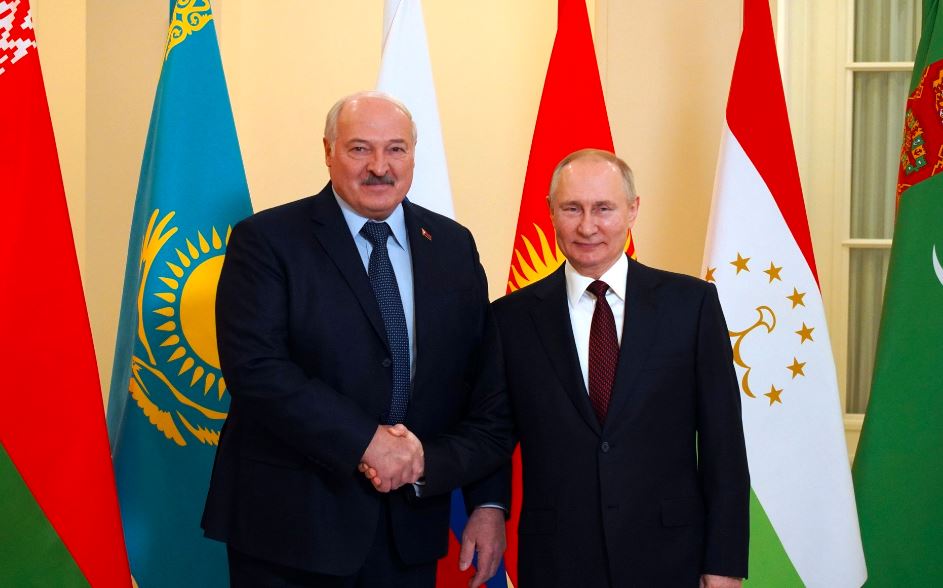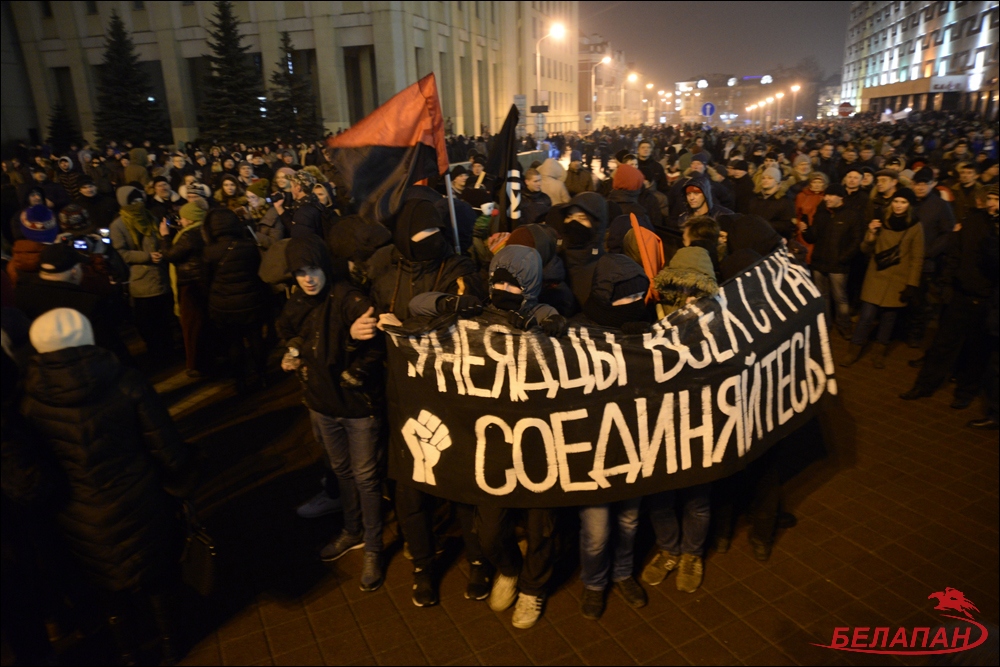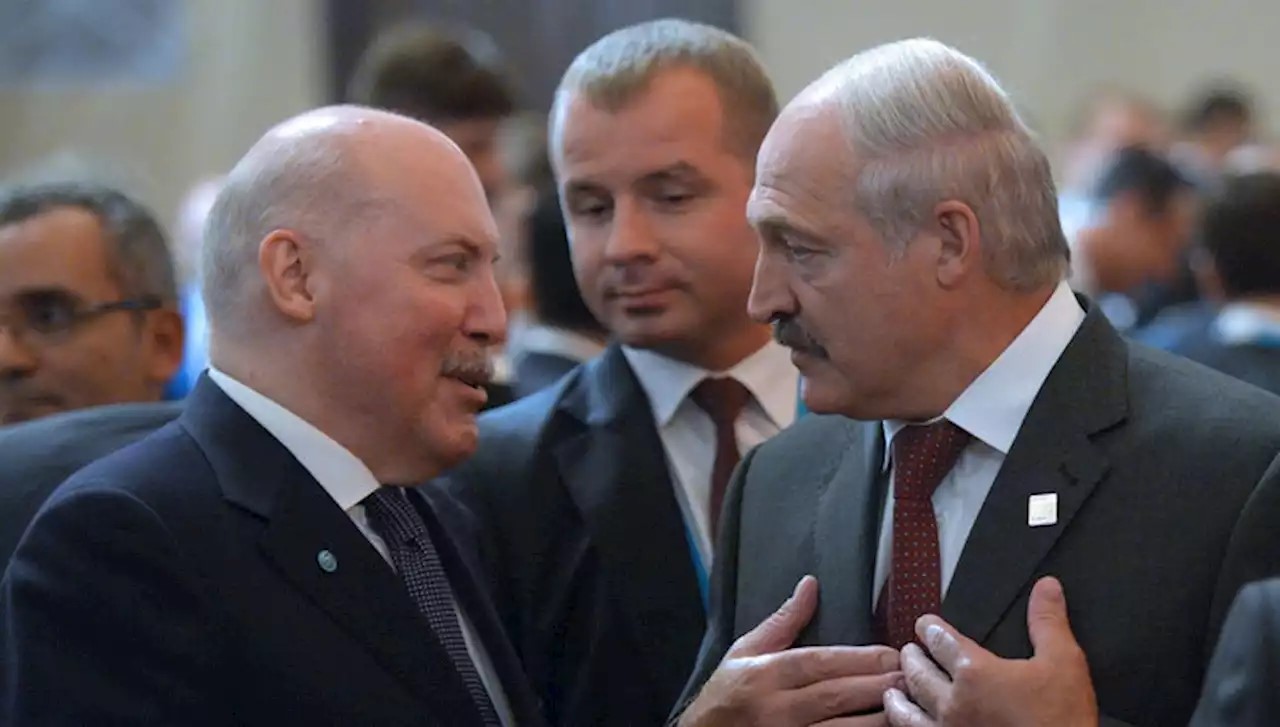As demonstrated by the 2020 presidential elections in Belarus, Alyaksandr Lukashenka's hold on power now hinges entirely on the will of the Kremlin. This has led his regime to provide Russian forces access to Belarusian territory in support of a full-scale attack on Ukraine.
After Russia's failed "blitzkrieg," Belarus has taken on a new role as a base for supplying the rear of the Russian army and circumventing Western sanctions. In recent weeks, Lukashenka has made visits to China and Iran, leading some to speculate that he is attempting to lessen Russia's hold on Belarus. However, it's more likely that Minsk's increased foreign policy activity is linked to the Kremlin's needs.
Belarus is the main rear of the Russian army
Belarus plays a crucial role in supportinп Russia's war against Ukraine through logistical assistance rather than direct military force. Since 2020, it has served as an ideal springboard for Russia's war against Ukraine, allowing Russian troops to enter Ukraine from Belarusian territory. Belarus continues to provide logistical support, supply lines, and medical assistance to the Russian military.
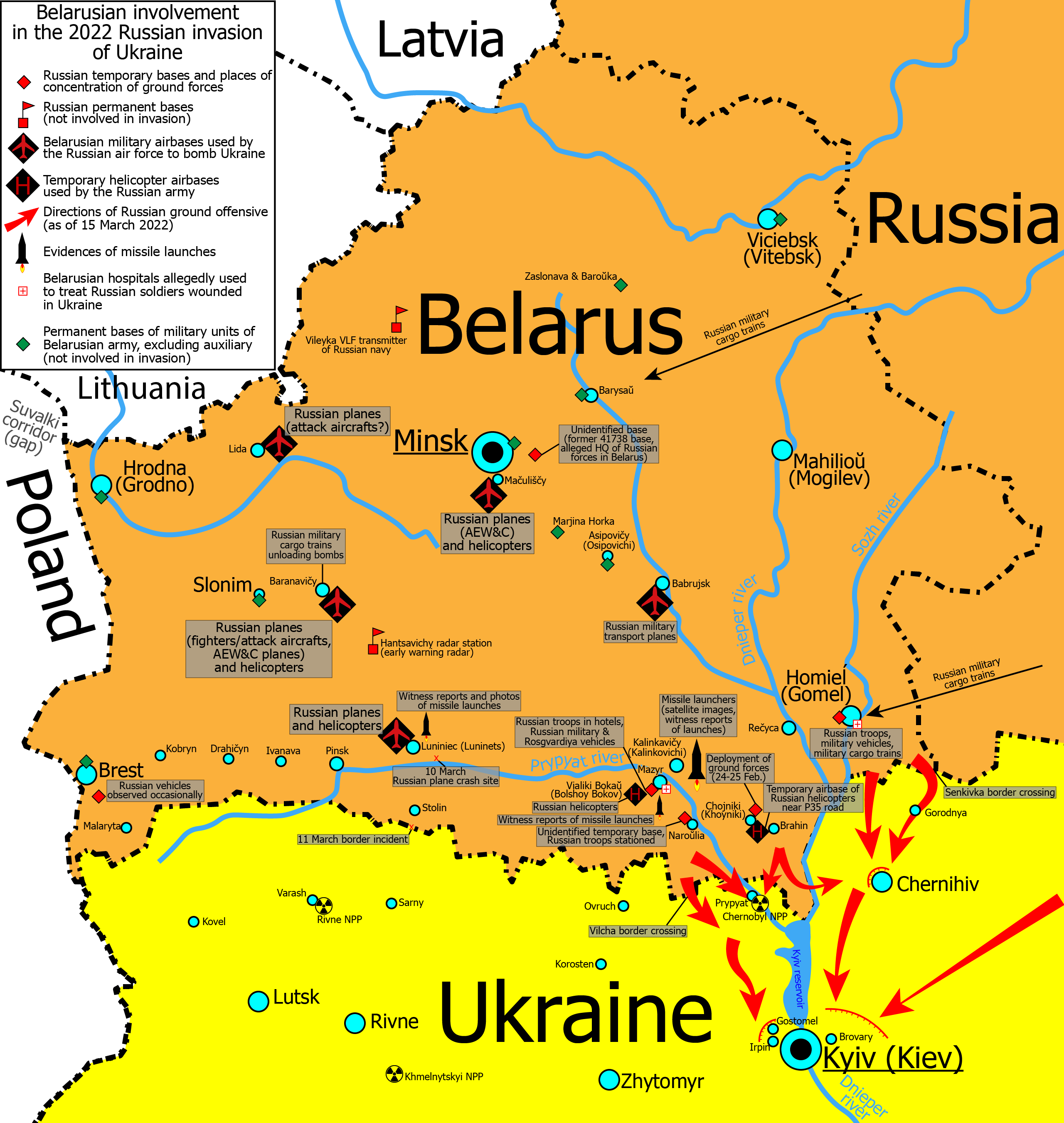
Belarus also supports the Russian military through other means, such as providing its territory for missile strikes and unmanned aerial vehicle attacks on Ukraine.
In addition to logistical support, Belarus supplies military equipment to Russia, including tanks and ammunition, as well as military training, medical care, and other services such as fuel refining and repair of military equipment.
Independent observers estimate that from March to September 2022, Belarus provided Russia with more than 65,000 tons of ammunition and sent over 211 units of military equipment, including 100 Soviet-made tanks (e.g., TM-72A) and about 60 IFVs BMP-2. This amounts to roughly 20% of Belarus' active battle tanks.
Belarusian officials have attempted to conceal the extent of their support for the Russian invasion of Ukraine. To this end, the State Security Committee of Belarus, the Ministry of Internal Affairs, and special forces have increased railway infrastructure security and surveillance while banning trains with military equipment from passing through Belarusian cities.
In October 2022, Belarus announced the deployment of the Joint Regional Military Group of the Union State, resulting in a large number of Russian troops being sent to Belarus. Most of these troops were mobilized reservists, about 10,000 of whom received military training under the guidance of Belarusian officers.
Belarus' key role in the military doctrine of the allied state has always been to transport Russian military formations and provide logistics during the deployment of Russian troops in Belarus. The agreement between the two countries on joint logistical support within the framework of the regional grouping of troops gives the Russian army the right to use Belarus' infrastructure and resources during times of "threat" or war.
Russian forces stationed in Belarus include:
- S-400 anti-aircraft systems
- Iskander and TOR M2 missile systems
- fighter jets
- other military aircraft, such as MiG-31Ks that carry Kinzhal hypersonic missiles capable of reaching targets up to 2,000 kilometers away.
The ongoing threat of invasion from Belarus keeps part of the Ukrainian army in the region rather than on the front lines where they are most needed. Ukraine has maintained approximately 20,000 troops near the Belarusian border instead of concentrating all forces in the east and south of the country.
In October 2022, Alyaksandr Lukashenka claimed that "NATO and a number of European countries wanted to drag Belarus into a war to settle scores with both Belarus and Russia." Subsequently, Belarusian officials visited state-owned companies and factories, telling workers that "the war could spread and that Belarus must act proactively to protect itself."
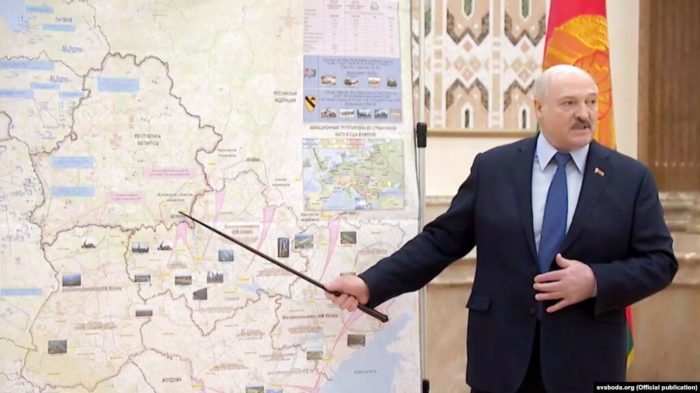
During a meeting with Vladimir Putin in Moscow on February 17th, Lukashenka announced that the Belarusian aerospace industry was ready to produce Su-25 attack aircraft for the Russian military with the support of Russian technology. He also mentioned that the Minsk Automobile Plant had begun producing components for Russia's KAMAZ and expressed a willingness to help Russia produce electronic components to replace lost Western imports.
Lukashenka reassured that Belarus is 100% fulfilling the unspecified agreements on defense and security cooperation that Belarus and Russia agreed on three months ago.
Enterprises of Belarus repair Russian military equipment for war against Ukraine
Since the fall of 2022, the Belarusian military-industrial complex has been repairing Russian equipment damaged during military actions. The Kremlin is leveraging the Belarusian defense potential to boost Russian defense production to support the ongoing war with Ukraine.
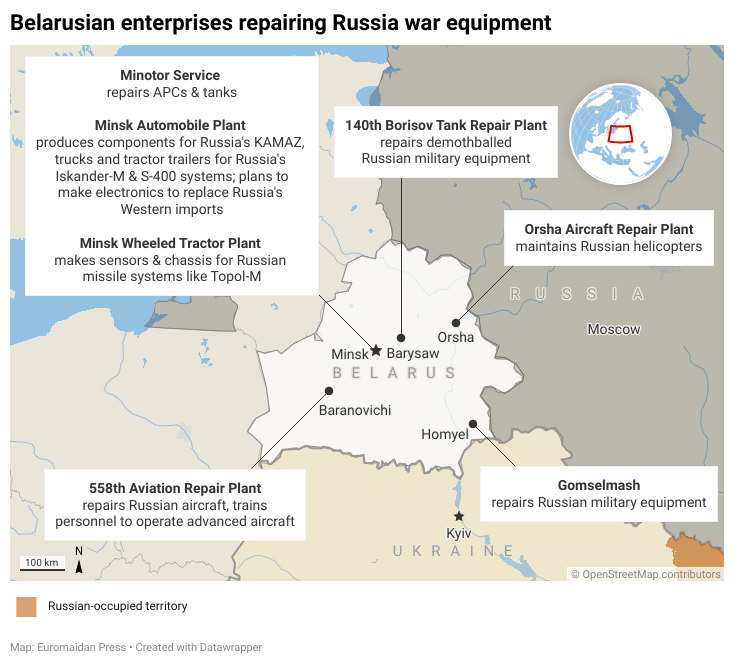
The equipment Russia is sending to Belarus for war against Ukraine has mostly been in long-term storage and is in poor technical condition. Both Belarusian military personnel and companies, such as the 140th Borisov Tank Repair Plant, are involved in repairing these units.
In particular, "Gomselmash" plans to start repairing military equipment for the Russian army. While the company is officially meant to produce "complex imported technical units for Belarusian and Russian agricultural machinery manufacturers," it is actually being used to repair Russian military equipment.
Belarusian companies were already involved in repairing and maintaining Russian military equipment before February 2022. For example, "Minotor Service" in Minsk repairs armored personnel carriers and tanks, the 558th Aviation Repair Plant in Baranovichi is used to repair Russian aircraft and train personnel to operate advanced aircraft for use in the war in Ukraine, and the Orsha Aircraft Repair Plant, which was previously owned by the Ukrainian manufacturer "Motor Sich," is responsible for maintaining Russian helicopters.
The Russian army heavily relies on sensors and wheeled chassis produced by the Minsk Wheeled Tractor Plant (MZKT), which are used as a transportation and launch platform for missiles like the Topol-M. The Minsk Automobile Plant
produces trucks and tractor trailers used to tow and install Russia's Iskander-M missile systems and S-400 air defense system.
Most of these companies are currently on international sanctions lists, making the Belarusian defense industry an easy target for the Russian military-industrial complex. Belarus is one of the few producers of military-grade components and repair services suitable for Russian military equipment, and Russia has not been able to fully replace these industries domestically.
The relationship between the military-industrial complexes of Russia and Belarus is highly interdependent, with Belarus exporting approximately $250-300 million worth of military products to Russia every year. This interdependence could complicate Russia's military activities and its ability to rearm its troops in Ukraine, especially considering the heavy losses in equipment that Russian troops have suffered during the war.
However, Western sanctions have isolated Belarus from the traditional supply chain of components, and most major Belarusian banks are also under restrictions, which has weakened Belarus' ability to finance its defense production.
Belarus and China's aid to the Kremlin for war against Ukraine
On 1 March 2023, the self-proclaimed President of Belarus and the Chinese President, Xi Jinping, signed a package of 16 documents aimed at facilitating aid to Russia through Belarus, potentially enabling the Kremlin to bypass sanctions for its war against Ukraine. The documents included a strategy for joint industrial development between Belarus and China, a plan for scientific and technical cooperation for 2023-2024, and a memorandum outlining the use of Chinese government loans.
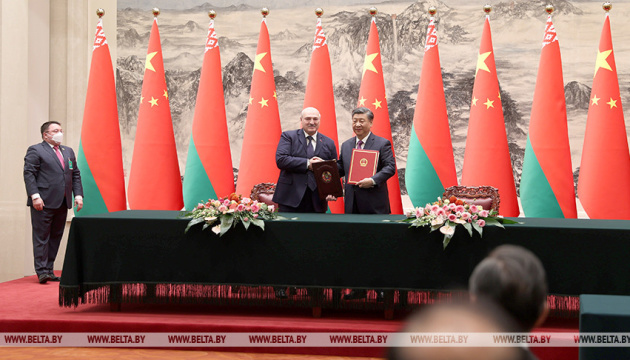
During a press conference, Lukashenka expressed interest in studying Chinese technologies related to engines, transmissions, bridges, and other components and units. This visit to China occurred at a critical time for Russia's military-industrial complex, which has experienced a shortage of technologies and equipment after a year of war with Ukraine. According to various estimates, the Russian army lost from 40 to 70% of its ground equipment.
Now China, not wanting Moscow to be defeated quickly, can secretly transfer military equipment or dual-use components to Russia through Belarus without being subject to secondary Western sanctions. However, China is unlikely to provide ready-made lethal weapons to Russia through Belarus for use in the Ukraine war.
In late February, the German newspaper Der Spiegel reported that China was shipping drones used for military reconnaissance in Ukraine to Russia. Additionally, the Chinese company Bingo has agreed to produce 100 kamikaze drones for the Russian army by April, similar to Iran's Shahed 136. It is possible that Lukashenka and Xi agreed to have this equipment assembled and maintained at Belarusian enterprises.
China may also provide electronic chips and engines to Belarus for the production of drones, radars, electronic warfare equipment, and weapon control systems that would then be transferred to Russia.
Belarus has previously used Chinese components to produce its Polonez multiple-launch rocket system -- a copy of the Chinese NORINCO ARS, a system intended for export which, according to some estimates, can hit targets at a distance of up to 300 km. Russia is interested in supplying this system, and the missiles for it are no longer Chinese but now locally produced at the Precision Electromechanics Plant in the Minsk region.
Belarusian-Chinese strategies for circumventing western Russian sanctions
There are three alternative strategies for China to provide military and technical assistance to Russia and circumvent sanctions.
- The most likely option is Belarusian localization, as Minsk already produces weapons using Chinese technology. Belarusian enterprises may soon begin large-scale assembly or production of other types of weapons, including drones, howitzers, and ammunition, using Chinese components.
- The second option is for Beijing to use the same "circular exchange" mechanism that Western countries use to provide weapons to Ukraine. European countries transfer armored vehicles and artillery to Kyiv upon a guarantee that they will receive more modern weapons from the United States and other NATO countries. China could offer compensation by providing its own modernized Soviet-made equipment to Iran, Syria, Belarus, or the DPRK in exchange for Russian military equipment.
- The third scenario is the transfer of industrial facilities for weapons production, rather than weapons themselves. With the help of Chinese equipment, machine tools, and materials, Russian defense plants will be able to speed up the production of armored vehicles and improve their protection. However, this is the most aggressive move in support of Moscow and a direct path to the implementation of sectoral sanctions against China by the G7 countries.
Thus, Minsk is becoming a geographically convenient tool for Beijing to provide military assistance to Russia in the war with Ukraine, joining the ranks of its longtime vassal, the DPRK.
Lukashenka's Iranian "business trip"
Following his visit to China, on March 12-13, Alyaksandr Lukashenka paid an official visit to another country on the "axis of evil" - Iran.
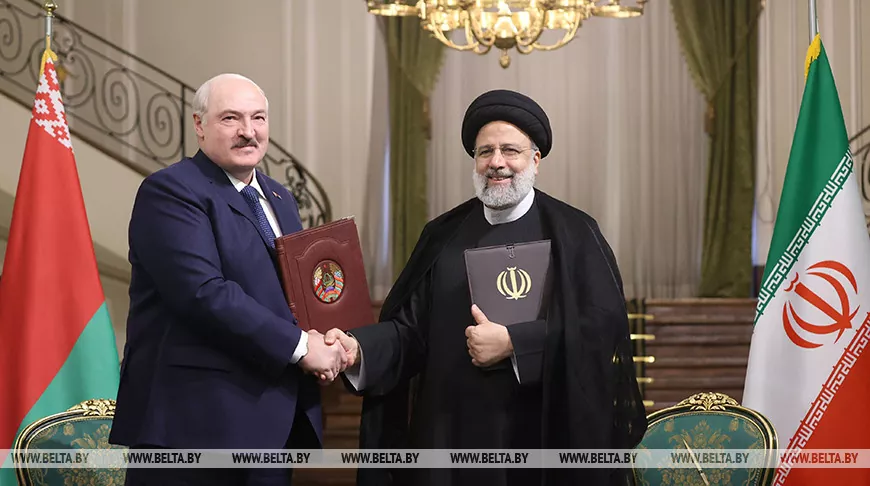
Belarus serves as a rear base for Russian troops, and Iran supplies Moscow with attack drones for use in the war with Ukraine. Iran has recently signed a contract to buy Russian Su-35 fighter jets but denies sending drones to Russia specifically for use in Ukraine.
According to the Belarusian opposition movement, Russian troops have fully taken control of the main air bases in western and southern Belarus. Iranian instructors have also been coordinating the launch of Shahed-136 UAVs at infrastructure facilities in the Kyiv Oblast and other Ukrainian regions.
Last October, Iranian instructors from the Islamic Revolutionary Guard Corps were spotted in Belarus training Russian military personnel and coordinating the launch of Iranian drones, which took place in the Gomel Oblast bordering Ukraine. Iranian instructors have also been spotted in the occupied Kherson Oblast, and the United States has confirmed the deployment of Iranian personnel in the occupied Crimea.
Belarus and Iran share a common experience of being subjected to US sanctions for years, making them pariah states in the international community. During his official visit to Iran on March 13, Alyaksandr Lukashenka highlighted the potential for cooperation between the two countries. "We could be very helpful to each other if we really put our efforts together," he said in a meeting with Iranian President Ebrahim Raisi.
Without mentioning the war in Ukraine, the two leaders signed a roadmap aimed at intensifying political, economic, and cultural cooperation, with a focus on economic and military-technical cooperation in the interests of their ally, Russia.
First, the Belarusian authorities are pursuing a project to produce parts for 152 mm and 122 mm shells, intending to create a closed cycle of production of key ammunition in the future.
According to Ukrainian intelligence, Belarus has been in discussions with Iran about organizing the assembly of 122 mm, 220 mm, and 300 mm shells from imported components. A delegation from the Belarusian Defense Ministry and the State Military-Industrial Committee visited Iran last November for this purpose.
In turn, Tehran is diversifying the production of its attack drones in other countries due to the risks of strikes on its industrial base. There are also concerns that Belarus may establish a node assembly for Iranian technology, as the 558th Aircraft Repair Plant in Baranovichi is reportedly working on creating its own kamikaze drones in cooperation with the company Quand IS.
Western intelligence is particularly focused on the deployment of Iranian short-range ballistic missiles Fateh-110 and Zolfaghar in Belarus, which have a range of 300 and 700 kilometers respectively, and could be a game changer in the war with Ukraine.
In 2022, Russia reached preliminary agreements with Iran on the supply of ballistic missiles, but Tehran has not yet transferred them due to the potential consequences of such a step. Belarus may serve as a convenient intermediary, and Lukashenka is known for profiting from war.
As Alyaksandr Lukashenka increasingly severs ties with the West, his ability to pursue an independent foreign policy is becoming more difficult. Due to anti-war sentiment, potential destabilization, and limited military capabilities, Lukashenka has managed to avoid direct involvement in the conflict, but the changing situation on the battlefield may shift the balance towards greater involvement by Minsk.
While such involvement could further destabilize the region, it would also increase Lukashenka's dependence on Russia, potentially leading to Putin attempting to appoint a more loyal leader in Belarus. In this context, the current "half-hearted" arrangement and Belarus' role as a mediator may be the best option for both leaders.
Moreover, the economic pressure imposed on Belarus by Western allies and the secondary sanctions against its trading partners could have consequences not only for the Belarusian economy but also for the Russian defense industry. Without new support from Russia and its satellites, Belarus may struggle to deliver military products in a timely manner, which could impact Russia's ability to sustain its war in Ukraine.

Oleksandr Kalinichenko is a lawyer specializing in international law and head of the "Atlantist Notes" project
Related:
- Russia considering continuing Belarus training program for its troops – UK intel
- Drone-wielding partisans took down unique Russian jet at Belarus’ Machulishchy airfield: activists
- Three more Belarusian “rail partisans” were convicted in Belarus, two of them to 22 years of imprisonment
- Rivne Oblast keeps building fortifications to repel possible assaults from Belarus

